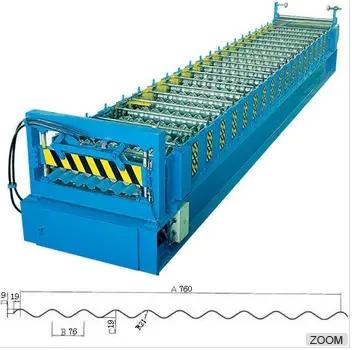
Understanding the Tube Mill Machine A Comprehensive Overview
In the realm of manufacturing, the tube mill machine holds a pivotal role in producing tubular steel products. This sophisticated equipment is used to construct tubes and pipes from various materials, commonly steel, aluminum, and other metals. The significance of tube mills can be observed in various industries such as construction, automotive, and energy, where tubes are essential components in both structural applications and fluid transportation systems.
At its core, a tube mill machine operates by producing flat strips of metal that are subsequently bent and welded to form a tubular shape. The process begins with coil steel input, which is carefully uncoiled and fed into the machine. The strip is then guided through a series of roll stands, which progressively shape the metal into a cylindrical form. These roll stands are designed with precision to ensure that the thickness and diameter of the tube meet strict specifications.
One of the critical stages in operating a tube mill machine is the welding process. As the edges of the metal strip converge, they are heated and fused together, creating a strong bond. This welding can be accomplished through various methods, including high-frequency induction welding (HFIW) and submerged arc welding (SAW). Each method has its own advantages, with HFIW being favored for its speed and efficiency, while SAW is often preferred for thicker materials requiring greater durability.

Quality control is integral throughout the tube production process. Tubes must meet industry standards for strength, durability, and resistance to factors such as corrosion and pressure. After welding, tubes undergo rigorous testing, including non-destructive testing (NDT) methods, such as ultrasonic and electromagnetic tests, to ensure that there are no defects that could compromise performance. Additionally, dimensional checks and visual inspections are performed to ascertain the overall quality of the product.
The versatility of tube mill machines allows for the production of a wide array of tube sizes and shapes, including round, square, and rectangular profiles. This adaptability makes tube mills indispensable in sectors such as construction, where diverse shapes are often required for different applications. The integration of advanced technologies, such as automated material handling and real-time monitoring systems, has further enhanced the efficiency and productivity of tube mills, allowing manufacturers to meet growing demands while maintaining high quality.
In recent years, there has been a shift toward sustainable practices within the manufacturing sector. Tube mill machines are increasingly being designed to reduce waste and energy consumption. Innovations like eco-friendly welding techniques and the recycling of scrap materials are becoming standard practices in the industry, aligning with global efforts to minimize environmental impact.
In summary, the tube mill machine is an essential tool in the manufacturing of tubular products, instrumental in a variety of industries. Its ability to produce tubes with precision and reliability, coupled with ongoing advancements in technology and sustainability, ensures that tube mills will continue to play a vital role in meeting the evolving needs of the market. As industries push for more efficient and eco-friendly solutions, tube mills are poised to adapt and thrive in this dynamic landscape.